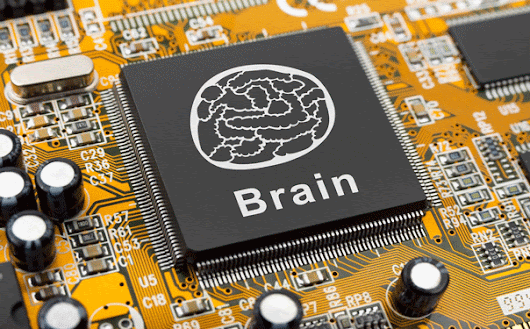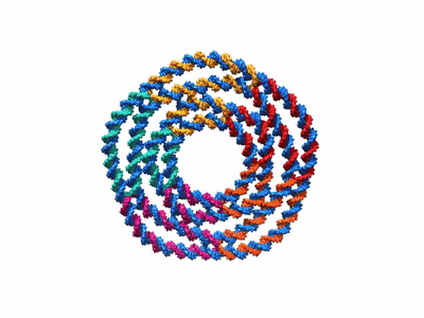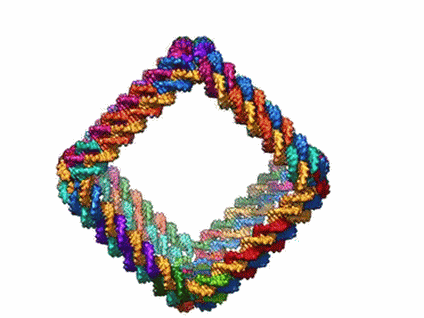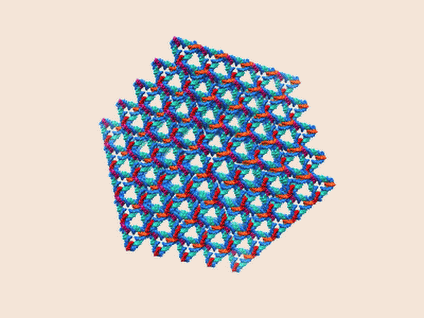Nanotech
Teslaphoresis
Scientists from Rice University have developed a way to make carbon nanotubes self-assemble in a dish using a powerful Tesla coil transformer circuit.Similar to graphene, carbon nanotubes are considered “supermaterials” with many potential applications but they have yet to be implemented on a wide scale. This new development will allow scientists to build circuits without actually touching them, marking a major step forward for potential uses of the material.
Scientists from Rice University have developed a way to make carbon nanotubes self-assemble in a dish using a powerful Tesla coil transformer circuit.Similar to graphene, carbon nanotubes are considered “supermaterials” with many potential applications but they have yet to be implemented on a wide scale. This new development will allow scientists to build circuits without actually touching them, marking a major step forward for potential uses of the material.

The Body Electric
The beating of our hearts, the rush of our blood and the myriad chemical reactions that keep us alive are all potential energy sources. Experts are working to develop technologies that take advantage of the powerful biological ecosystems we already carry around with us.Engineers at the University of Illinois at Urbana-Champaign and Northwestern University teamed up with cardiologists at the University of Arizona to develop what they call piezoelectric nanoribbons, which attach to the outside of the heart muscle, much like a Band-Aid. These tiny strips contain crystals that create an electric current when flexed — each time the heart expands and contracts. In animal tests, electrical output reached 0.2 microwatts per square centimeter, potentially strong enough to power self-contained pacemakers and make battery-replacement surgeries a thing of the past.
The beating of our hearts, the rush of our blood and the myriad chemical reactions that keep us alive are all potential energy sources. Experts are working to develop technologies that take advantage of the powerful biological ecosystems we already carry around with us.Engineers at the University of Illinois at Urbana-Champaign and Northwestern University teamed up with cardiologists at the University of Arizona to develop what they call piezoelectric nanoribbons, which attach to the outside of the heart muscle, much like a Band-Aid. These tiny strips contain crystals that create an electric current when flexed — each time the heart expands and contracts. In animal tests, electrical output reached 0.2 microwatts per square centimeter, potentially strong enough to power self-contained pacemakers and make battery-replacement surgeries a thing of the past.
A thin strip with piezoelectric power generators can convert this cow heart’s movements into electrical power to run pacemakers or other medical devices.

Nanotech transforms cotton fibers into modern marvel
A Cornell University lab is applying nanotechnology to make textiles do a whole range of new and useful tricks.
Chemical and biomolecular engineer Juan Hinestroza and his team in the textiles nanotechnology lab are adding tiny bits of metal into fibrous material like cotton. When woven into a textile, the augmented yarn can produce light, kill disease-causing microbes or act as a filter to trap harmful gas. In addition, the metal oxides allow the yarn to be fashioned into conductive components like transistors for electronics.
A Cornell University lab is applying nanotechnology to make textiles do a whole range of new and useful tricks.
Chemical and biomolecular engineer Juan Hinestroza and his team in the textiles nanotechnology lab are adding tiny bits of metal into fibrous material like cotton. When woven into a textile, the augmented yarn can produce light, kill disease-causing microbes or act as a filter to trap harmful gas. In addition, the metal oxides allow the yarn to be fashioned into conductive components like transistors for electronics.

Nano memory cell can mimic the brain’s long-term memory
Researchers at the MicroNano Research Facility (MNRF) have built the one of the world’s first electronic multi-state memory cell which mirrors the brain’s ability to simultaneously process and store multiple strands of information.The development brings them closer to imitating key electronic aspects of the human brain – a vital step towards creating a bionic brain – which could help unlock successful treatments for common neurological conditions such as Alzheimer’s and Parkinson’s diseases.
Researchers at the MicroNano Research Facility (MNRF) have built the one of the world’s first electronic multi-state memory cell which mirrors the brain’s ability to simultaneously process and store multiple strands of information.The development brings them closer to imitating key electronic aspects of the human brain – a vital step towards creating a bionic brain – which could help unlock successful treatments for common neurological conditions such as Alzheimer’s and Parkinson’s diseases.

3-D DNA structures
MIT biological engineers have created a new computer model that allows them to design the most complex three-dimensional DNA shapes ever produced, including rings, bowls, and geometric structures such as icosahedrons that resemble viral particles.“The general idea is to spatially organize proteins, chromophores, RNAs, and nanoparticles with nanometer-scale precision using DNA. The precise nanometer-scale control that we have over 3-D architecture is what is centrally unique in this approach,” says Bathe, the senior author of a paper describing the new design approach in the Dec. 3 issue of Nature Communications.
MIT biological engineers have created a new computer model that allows them to design the most complex three-dimensional DNA shapes ever produced, including rings, bowls, and geometric structures such as icosahedrons that resemble viral particles.“The general idea is to spatially organize proteins, chromophores, RNAs, and nanoparticles with nanometer-scale precision using DNA. The precise nanometer-scale control that we have over 3-D architecture is what is centrally unique in this approach,” says Bathe, the senior author of a paper describing the new design approach in the Dec. 3 issue of Nature Communications.
‹





Leave a Reply
Want to join the discussion?Feel free to contribute!